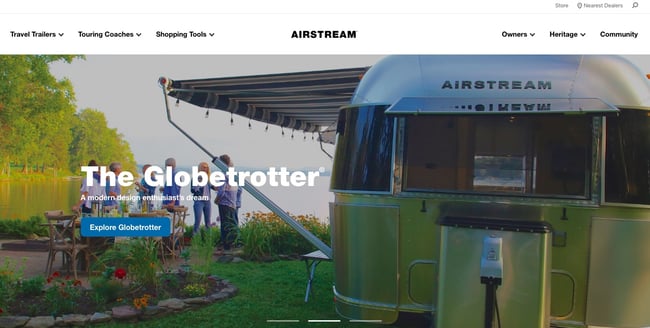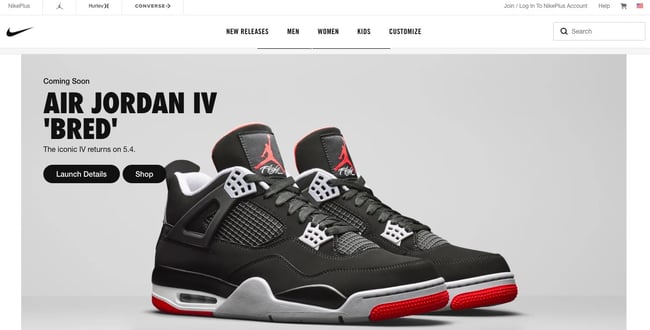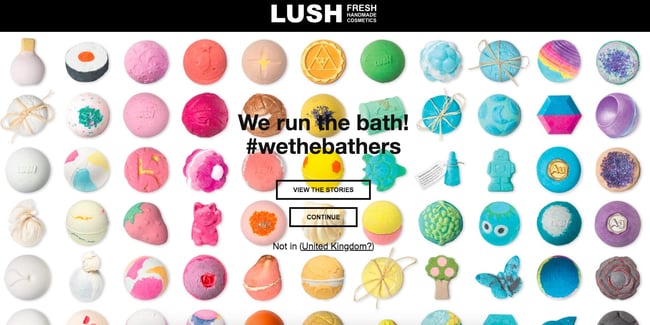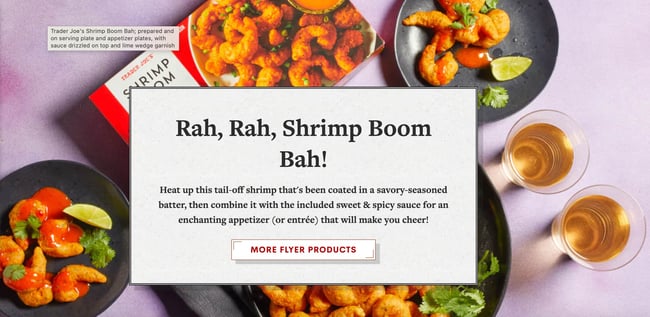Marketers utilize several strategies when it comes to helping companies sell. While email and social media marketing may get all the glory, product differentiation is key to communicating your value to consumers.

So, how can a differentiation strategy work for your business? Let's demystify product differentiation.
Table of Contents- Product Differentiation
- Types of Product Differentiation
- Vertical vs. Horizontal Product Differentiation
- Product Differentiation Examples
What is product differentiation?
Product differentiation is a strategy used by businesses to highlight the unique features and benefits of its product or service to separate it from competitors. The marketing team communicates these unique qualities through their campaigns and promotions. Then the sales team uses them to demonstrate the product's competitive advantage.
Also known as product differentiation strategy, product differentiation is a method for companies to make their products stand out and grab the attention of consumers. This helps the company develop a strong brand that potential customers will recognize. And it increases the likelihood they'll pick your product over a generic or undifferentiated product or service.
Businesses that make product differentiation work for them have the following qualities:
- Innovative and inventive
- The resources to create high-quality products or services
- A strong research and development team
- Marketing and sales strategies that communicate the benefits and competitive advantage of the product or service
The Importance of Having a Differentiation Strategy
Product differentiation helps brands develop a competitive advantage in a market where consumers have lots of choices. To be successful, your product or service needs to stand out above the alternatives.
Your strategy should tap into what your brand does best and then communicate those advantages to potential customers.
The differentiation strategy a business chooses will depend on its industry, competitive market, and the products or services it's selling.
Types of Product Differentiation
Companies use a variety of ways to distinguish themselves from competitors. From pricing to customization, what sets you apart will depend on your brand's unique offerings.

Depending on the type of strategy you choose, there are specific areas where you can differentiate your product.
- Price
- Quality
- Reliability
- Features
- Design
- Location
- Brand image
- Customization
- Distribution channels
- Post-sale support
Product Differentiation Strategy
Vertical Product Differentiation vs. Horizontal Product Differentiation
Product differentiation typically falls within two categories: vertical and horizontal. However, customers may use a mix of the two to determine whether or not to make a purchase.
Vertical Product Differentiation
Vertical product differentiation is based on a measurable attribute like price or quality. For example, a customer may choose a product that ranks highest for quality over other brands. For other customers, price point may be the most important factor, so they choose the least expensive item.
Examples of vertical differentiation: Apple vs. Android products, generic vs. branded items
Horizontal Product Differentiation
Horizontal product differentiation refers to factors that aren’t measurable like personal preference. This typically occurs when products or services have roughly the same price point. For example, a customer may choose the chicken sandwich from Shake Shack over Chick-fil-A due to a personal preference, rather than quality or cost concerns.
Examples of horizontal differentiation: Dr. Pepper vs. Mr. Pibb, Bounty vs. Brawny paper towels
Customers may use mixed differentiation when making more involved purchases that combine attributes of both vertical and horizontal differentiation. For example, if you are buying health insurance, you’ll consider vertical differentiation attributes like cost, in-network physicians, and coverage. You may also take into account brand recognition and perceived image, which would fall under the horizontal differentiation category.
Advantages and Disadvantages of Product Differentiation
Before pursuing a product differentiation strategy, it's best to review the advantages and disadvantages and consider how they'll impact your business.
Advantages of Product Differentiation
1. It creates additional value.
Product differentiation will give your prospective customers added value. This value can either come directly from the product and service, or from the brand perception.
2. It develops brand loyalty.
Every time people see your products on store shelves or in an online ad, they'll know exactly what your brand represents. And they'll be more likely to choose your product over the competition.
3. It allows businesses to compete in different ways.
With product differentiation, companies have the ability to compete in areas other than price. They can be innovative in style, quality, features, etc. It's up to the business to decide which area of differentiation will work best for their target markets.
Disadvantages of Product Differentiation
1. Revenue increases are not guaranteed.
Will consumers find value in the unique features your product provides? A differentiation strategy doesn't necessarily guarantee that consumers will find the value that separates your product from other, standard options.
For example, if your product is more expensive than the competitor selling the standard product, and the consumer doesn't see the added value in your product, they'll likely choose the cheaper option.
2. The offering's perceived value can decline.
As consumers become savvier and technology and products advance, the differentiation of your product might no longer provide value to customers. You should consider how long your differentiation strategy will last and if it will need to be modified at a later date.
3. It can strain resources.
Pursuing a differentiation strategy means a lot of time, energy, and resources will be spent to develop a product that sets itself apart from the competition. This can put a burden on research and development teams, product manufacturers, and even your profit margins. These effects are felt more by smaller businesses that have few employees and limited resources.
Product Differentiation Examples
Differentiation strategies can be used in a variety of industries and business types. Here are a few examples of product differentiation from businesses that have made the strategy work for them.
1. Trader Joe's
Main Competitors: Whole Foods, Kroger, Sprouts
Trader Joe's has earned a dedicated following among shoppers thanks to the brand's friendliness and unique items. I mean, who can resist those Hawaiian shirts, free samples, and friendly banter?
Trader Joe's sets itself above the competition by leveraging its friendly service and combining it with unique and often seasonal items. The compact, small square footprint of its stores and humorous handwritten signs advertising the day's deals make shoppers feel like they're in a local establishment rather than a national chain.
Most of all, Trader Joe's delivers high-quality items shoppers can't get anywhere else at a budget-friendly cost.
2. Airstream
Main competitors: Fleetwood, Jayco, Winnebago

There's a retro mystique about Airstream's RVs. They're silver, streamlined, and highly recognizable on the road.
The company sets its RVs apart from the competition by focusing on quality and their value increases with time. Higher quality means lower maintenance costs and higher resale value. Plus, they're known to last for generations:
"Since the 1930s, Airstreams have been handed down from generation to generation, passed on to family members, friends, or new adventurers -- and they look just as great in their 30th year as they did in their first. That’s the quality standard we hold ourselves to."
Airstream's brand is further developed through its heritage, which builds trust with potential customers and highlights the company's success over the years. With the tagline "Live Riveted," Airstream inspires people to get on the road and travel with an RV.
3. Billie
Main Competitors: Flamingo, Harry’s, Dollar Shave Club
Billie differentiates itself from typical direct-to-consumer body care brands by focusing on women first, combatting the pink tax, providing premium products, and making the future brighter for all women. This strategy has helped the company realize monumental success and develop a recognizable brand with a positive reputation.
Billie's co-founder, Georgina Gooley, said in an interview with Columbia Women’s Business Society, “We knew right away that we wanted to create a brand that put women first in a category that had always considered them an afterthought. Our goal is to create a little bit of magic in the mundane and make an everyday routine more enjoyable (and a lot more affordable!).”
By positioning itself as a champion of women of all sizes, shades, and grooming habits Billie has carved out a niche all its own within direct-to-consumer personal care.
4. Fabletics
Main Competitors: Lululemon, Athleta (by Gap)
Similar to Billie, Fabletics positioned its brand toward women of all sizes and backgrounds for its direct-to-consumer activewear brand. With Kate Hudson at the helm, Fabletics offers quality, stylish clothes on par with competitors like Lululemon, minus the elitism.
The company often partners with celebrities and athletes for each of its campaigns, including Kevin Hart to launch its new menswear line. Additionally, they've partnered with Lizzo to launch her new size-inclusive shapewear line, YITTY.
Each month, Fabletics rolls out a new collection of styles, separating it from the competition and ensuring that consumers always have fresh looks to try.
5. Nike
Main competitors: Under Armour, Adidas, Reebok International

What separates Nike from the competition? Branding. The company positions itself in the market as an innovative company that creates high-quality sports apparel and shoes.
The company works with high-profile athletes to wear and promote Nike apparel. A few of these athletes include Serena Williams, Michael Jordan, Cristiano Ronaldo, and more. This attracts new (and returning) customers because many aspire to be just like their favorite athletes.
Nike creates new and innovative product lines and creates buzz and excitement for the product launches through its promotions. Not only does this pique the interest of new customers, but it also keeps existing customers coming back for more.
6. Lush
Main competitors: The Body Shop, Origins, Sephora

Lush stands out from other cosmetic brands due to its focus on fresh, handmade cosmetics. This is something that isn't often done by generic cosmetic brands, and it's what differentiates Lush from the competition.
Its message is another area where Lush stands out from the crowd. Their target customer values social responsibility, and the company takes it to heart. All the products are made using natural, vegetarian ingredients, reusable and recyclable packaging, and without animal testing.
And each visit to a Lush store offers a unique experience. You can test out products and have your questions answered by impeccable, friendly store associates. Each aspect of Lush's differentiation strategy makes it the recognizable and well-loved brand it is.
For even more product differentiation examples, check out these companies that brilliantly differentiated themselves from the competition.
A Product Differentiation Strategy is Key to Success
Having a well-planned product differentiation strategy can set your business and brand apart from competitors. Find what makes your organization unique and communicate how those qualities bring value to customers.
Editor's note: This article was originally published in May 2019 and has been updated for comprehensiveness.
![→ Download Now: Free Product Marketing Kit [Free Templates]](https://no-cache.hubspot.com/cta/default/53/08b5e1f4-5d26-405b-b986-29c99bd0cb14.png)






![How to Start a Business: A Startup Guide for Entrepreneurs [Template]](https://blog.hubspot.com/hubfs/How-to-Start-a-Business-Aug-11-2023-10-39-02-4844-PM.jpg)


![How to Write a Business Proposal [Examples + Template]](https://blog.hubspot.com/hubfs/how-to-write-business-proposal%20%281%29.webp)


